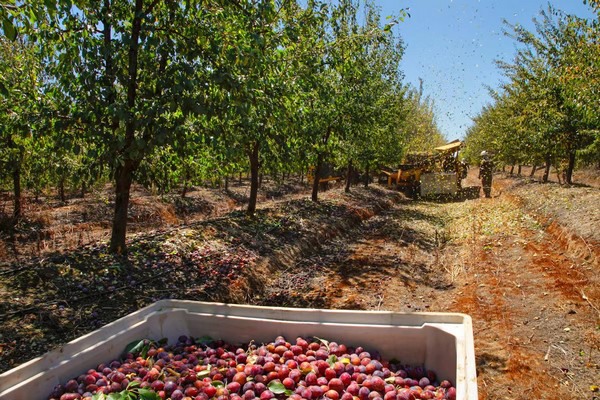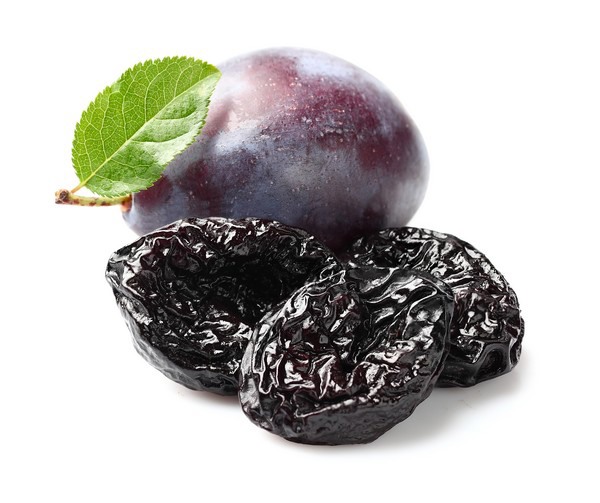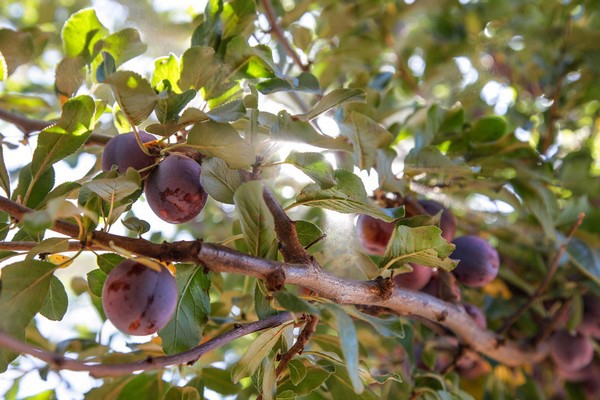In recent years, Chilean fruits have gained popularity in more and more countries and their export volumes increase year by year. However in the 2021 season, fresh prunes suffered a poor harvest due to heavy rainfall in February.
BDP Foods is an international business platform founded in 2009. The company represents and supports important client companies such as Anakena, Supefruit, GoodValley, Andes Quality, Agromar and Vitakai in the market for Chilean nuts and dried fruits. Diego Vicente is the CEO at BDP Foods, he and his client companies shared their market insights of prunes of the current season.

Industry review of current prunes season
Chilean plums are harvested mostly in February. Then they go through a drying process, to store them dried as a raw material. After that, the prunes can be rehydrated and packed at any time during the year. According to the “Prunes from Chile” association, the Chilean prune export volume decreased by 14% during the first quarter of 2021, but the FOB price per ton increased by 11%.
Diego first reviewed the current prunes season: “After the global prune market experienced a difficult year in 2020, the Chilean prune sector looked forward to a big harvest of high-quality crops this year. Unfortunately climatic conditions changed the entire picture,” Diego said.
“The unusually heavy rains hit the growing area in early February, which caused the loss of large volumes of prunes. According to people in the industry, the production volume this season is around 20% smaller than last season, reaching just 45,000 tons. This has led to a rise in demand for this product due the shortage of supply. The price consequently rose dramatically. It will be challenging for importers and clients to secure the volumes they need and to find the right markets that can absorb these price levels.”
The unusual conditions this season undoubtedly create huge challenges for the export sector, but Chilean companies work closely together with their Chinese counterparts to overcome any difficulty this season.
Mateo Garcia is the Commercial Director at Superfruit: “The initial estimate of the Chilean production volume of dried prunes was about 75,000 tons, of which 18,000 was destined as fresh prunes for the Chinese market. The remaining 57,000 tons that was left over for the dried fruit market was already smaller than last year. And just one week before the harvest, the industry suffered excessive rainfall with about 20-100mm in some areas, decreasing the production by 47% of the initial volume. This leaves only about 33,000 tons of prunes for the dried fruit market. Naturally, due to the limited supply, markets are very active, looking to obtain sufficient volumes. It will be a challenge this year to supply all our clients and maintain regular operations in our factory.”

This season traders experienced a severe shortage in terms of available volume, not only at the national level but also at the global level.
Bruno Ceroni the Commercial Manager at Good Valley shared his insights: “After the rains Chile was left with a very low production volume of about 45,000MT, and Argentina with about 6,000MT. In addition, the news of frosts in France that will affect the harvest next August, has further pushed demand for plums. That is why the international price of plums significantly increased.”
“In 2021 there will be high market demand and there will be supply problems, but we believe that 2022 should return the market to normal. In this challenging situation, we are privileging old clients and programs that we have been carrying out for several years,” Bruno said.

Chilean prunes performance in different markets
To be closer to its clients and provide better support, BDP Foods operates offices in many regions such as Spain, Russia, Thailand and China. Each BDP Foods Regional Manager shared their insights of the current season in these markets.
Andrés Kuznar first gave his insights into the Russian market, “Chilean prunes are in a better position although their supply is still limited in Russia. Importers currently have no stock and are in a desperate search for this fruit. Just to give a price indication, today the market is dominated by Turkish prunes with a price close to $3.30 per kg. Clearly the impact of the devaluation of the Russian currency has a negative impact on imports. The trend is expected to continue in the coming years and the price of the ruble is expected to continue to devalue against the USD. This has caused importers to switch their suppliers to cheaper countries such as China, former Soviet republics, and Eastern Europe.”
“The 2020 season was not bad for dry fruits in Thailand,” Sergio Ramirez continues, “according to importers, the consumption did not change too much compared to 2019 and in 2021 we can expect similar volumes. For Chile, the last season was a good one. In fact, the imported volume of Chilean prunes in 2020 increased by 32% compared to 2019. The main challenges that importers face nowadays are the availability and high prices. 2021 will be more complicated due to an increase in prices, while at the same time the purchasing power of Thai people and other neighboring countries is considerably decreasing. Therefore, people are more cautious about their spending and will be more prudent with unnecessary purchases which may include many imported items.”
When talking about China, the fastest growing market for Chilean prunes, Francisco Riesco said: “This season the price of prumes has increased around 1.5-2.5 USD/kg due to the heavy rain. Chinese importers have difficulty finding offers when the prices are this high, which decreases the chance of success for Chilean prunes in the Chinese market. The Chinese market demands natural conditions, but the small supply volume of raw materials plums limits the market in 2021. Last year, China imported 5,454 tons of prunes from Chile, an increase of 14% compared to 2019. However, even with the pandemic, the Chinese market grew. This year due to the price increase and limited supply volume, China’s import volume will certainly decrease. We have been receiving several inquiries for natural conditions, but unfortunately, Chile is short on volume because of the unexpectedly heavy rainfall."

BDP Foods
“Although we live in an increasingly globalized world, each market is unique and incomparable. This makes it very necessary to have an increasingly closer relationship with customers and a greater understanding of each market, in order to achieve the translation from global strategy to “local action”, something which can be very difficult to achieve from a distance of thousands of miles.” Diego said.
BDP Foods aims to transfer all the benefits of having an office at the destination, with a highly trained multicultural professional team, to develop the markets where we are. “We represent the best food producers in different origins, who have in common a special focus on quality, good service and a long-term vision. Thanks to this we managed a wide portfolio of different products, which allows us to provide a complete solution to the main importers and supermarkets in the markets where we are, with the consequent benefits for all our export partners.”
For more information:
BDP Foods
Diego Vicente (CEO at BDP Foods)
Dvicente@bdpfoods.com
www.bdpfoods.com
